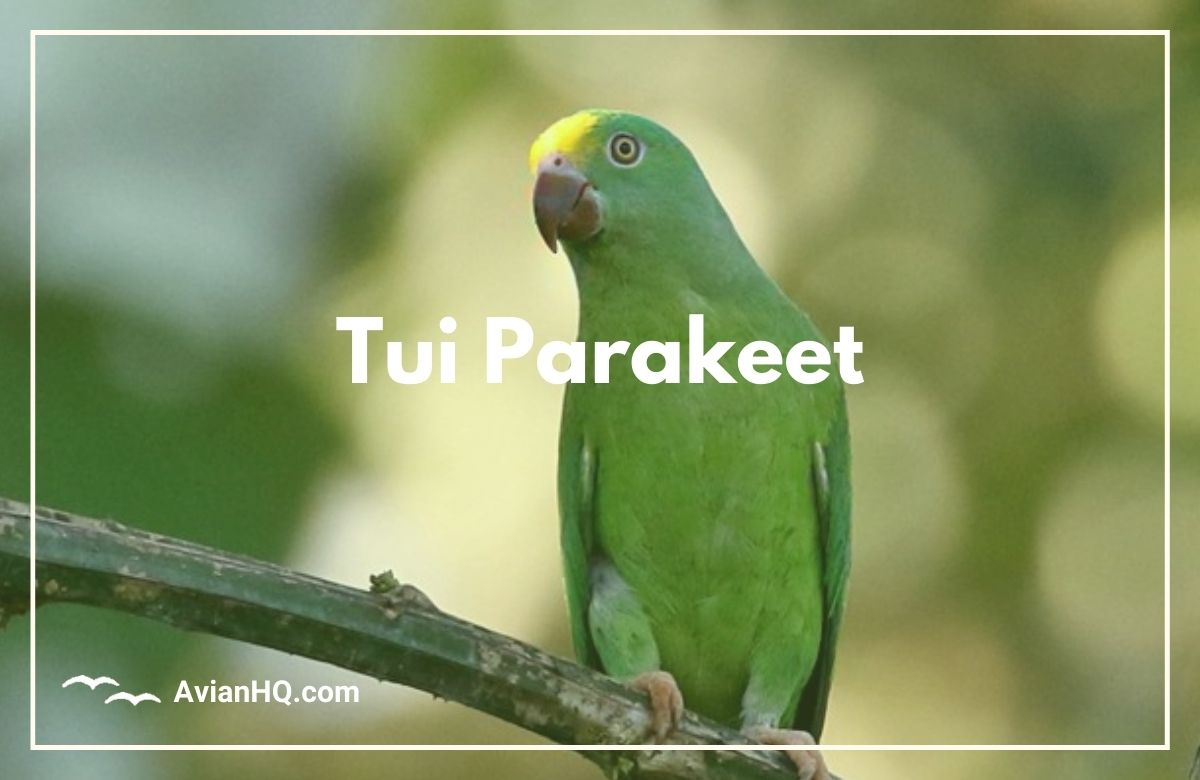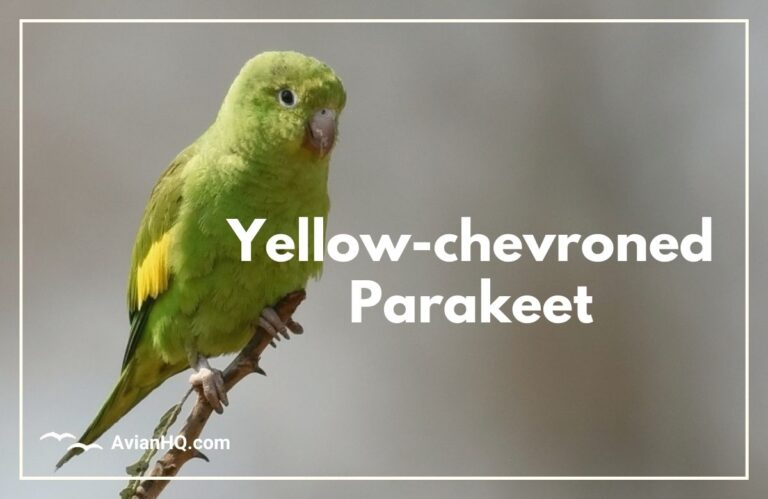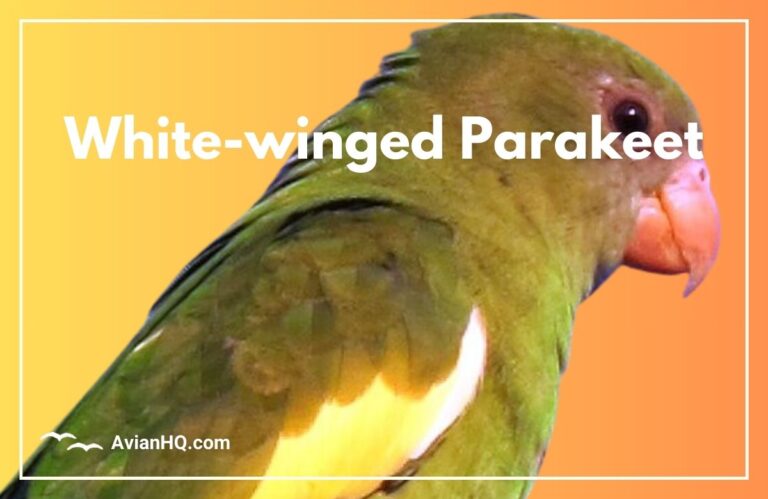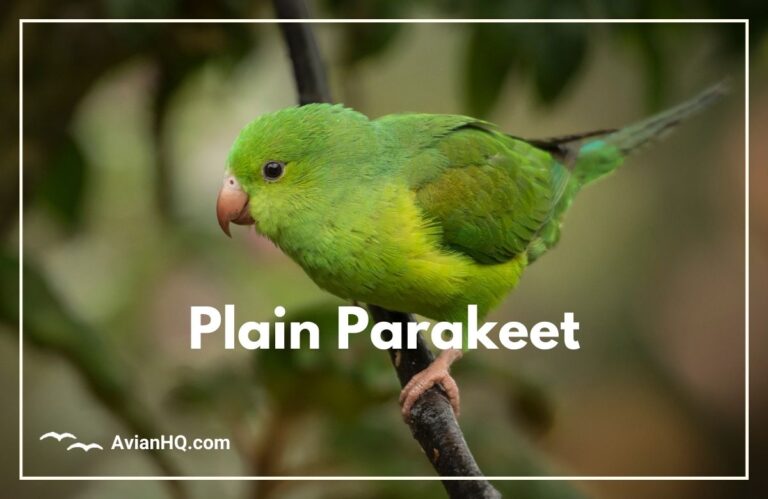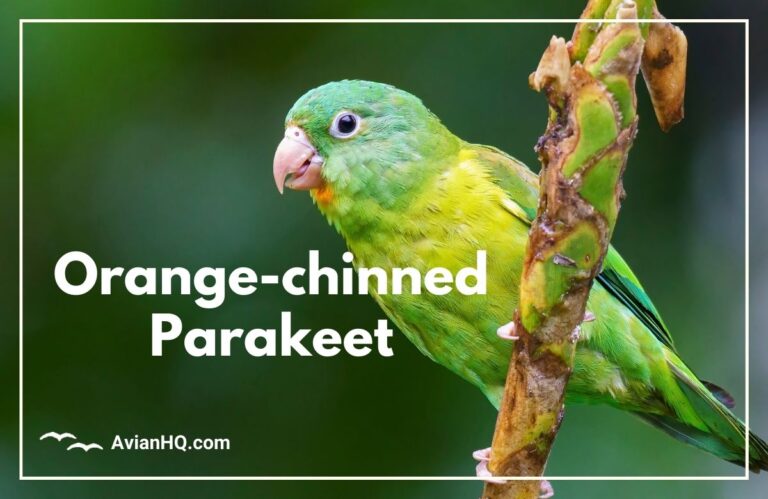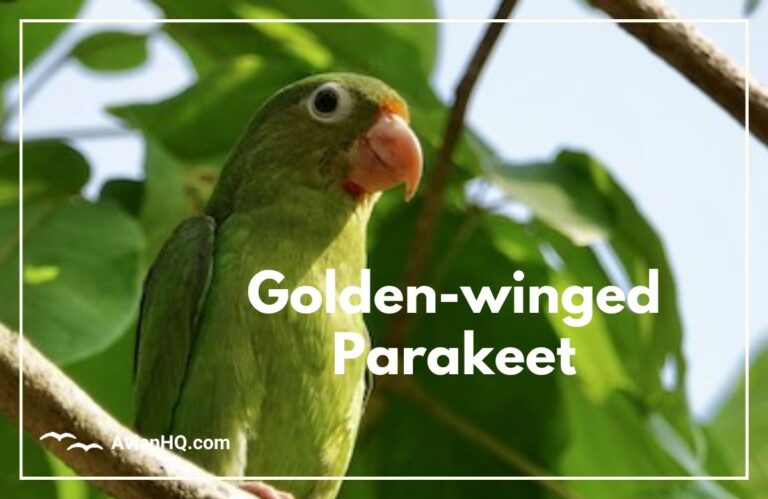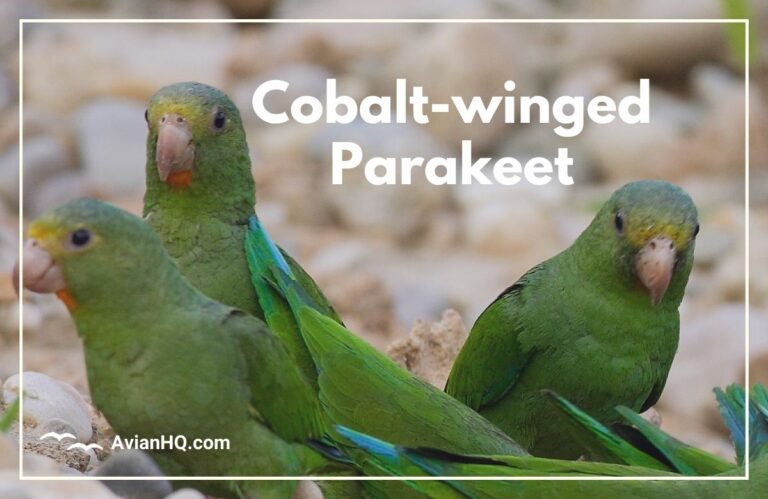Tui Parakeet (Brotogeris sanctithomae)
The Tui Parakeet (Brotogeris sanctithomae) is a captivating and charming bird native to the lush habitats of South America. With its vibrant plumage and delightful personality, the Tui Parakeet has captured the attention of bird enthusiasts worldwide. In this article, we will explore the history, physical appearance, habitat, diet, breeding habits, behavior, conservation status, and cultural significance of this fascinating species.
History and Taxonomy
The Tui Parakeet, scientifically known as Brotogeris sanctithomae, has a rich history dating back to its scientific description in 1844 by German naturalist Johann Georg Wagler. It belongs to the order Psittaciformes and the family Psittacidae. The scientific name Brotogeris sanctithomae was derived from the island of St. Thomas, where the species was first discovered.
There are two recognized subspecies of the Tui Parakeet: B. s. sanctithomae and B. s. tambopatensis. Each subspecies has distinct geographic ranges, contributing to the overall diversity and distribution of this captivating bird.
| Subspecies | Geographic Range |
|---|---|
| B. s. sanctithomae | Native to St. Thomas, the British Virgin Islands, Puerto Rico, and the U.S. Virgin Islands |
| B. s. tambopatensis | Native to southeastern Peru and adjacent areas of Brazil and Bolivia |
Physical Appearance
The Tui Parakeet is a small, vibrantly colored bird that originates from the lush rainforests of South America. When you first glimpse one with its bright green body, striking orange face, and charcoal colored head, you can’t help but be captivated by its beauty.
These parakeets average about 8 inches (20 centimeters) in length from the top of their head to the tip of their tail. Their wingspan reaches approximately 6 inches (15 centimeters). Weighing only 2 to 3 ounces (60 to 80 grams), these tiny acrobats dart easily through trees and foliage.
“The Tui Parakeet’s bright plumage looks like a little feathered rainbow dancing among the trees.”
The Tui Parakeet shows remarkable diversity in its physical traits across different regions. Two distinct subspecies exist, each with its own set of identifying features.
The nominate race, B. s. sanctithomae, displays a vibrant orange-yellow cheek patch in sharp contrast to its greyish-black head. Meanwhile, the Peruvian race, B. s. tambopatensis, possesses a paler, more yellowish cheek patch. The size of the cheek patches also differs slightly between the subspecies.
No matter the subtle variations, all Tui Parakeets share a captivating essence. Their striking colors and lively movements showcase nature’s artistry. Once seen, these little parakeets remain etched in the memory.
Habitat and Distribution
The Tui Parakeet, also known as Brotogeris sanctithomae, is a captivating South American bird that can be found in a diverse range of habitats. Its natural habitat primarily includes the lower Amazon basin and adjacent forests in South America. The Tui Parakeet is well adapted to thriving in lowland and foothill rainforests, with elevations reaching up to 3000 ft.
In addition to its native range, the Tui Parakeet has also established an introduced population in Puerto Rico. This population was formed after hurricanes in 1956-57, highlighting the species’ resilience and adaptive capabilities.
Overall, the Tui Parakeet’s distribution spans across South America’s lush vegetation, where it has adapted to a variety of ecological environments.
| Habitat | Native Range | Introduced Population |
|---|---|---|
| Lower Amazon basin and adjacent forests | In South America | Not applicable |
| Lowland and foothill rainforests | In South America | Not applicable |
| Not applicable | Not applicable | In Puerto Rico |
Diet and Feeding
The Tui Parakeet is the feathered equivalent of an epicure, sampling a wide variety of foods from its rainforest habitat. Its diverse diet includes fruits, seeds, berries, buds, nuts, and even insects. This gives it endless foraging possibilities across the seasons.
Small, soft fruits top the menu for these tiny parrots. They seek out wild berries and juicy, tropical fruits which provide essential hydration along with important nutrients. You may even spy a Tui Parakeet sneaking a snack from orange trees or other crops. With their curved beaks and swift movements, they can access fruit hidden deep within the lush vegetation.
“Tui Parakeets have an adventurous appetite, trying new foods and adapting their diet as the seasons change.”
Mealtimes also bring out the Tui Parakeet’s social side. They chatter excitedly as they forage together in small groups of six or less. You can watch them using their climbing skills to scour branches, leaves, and trunks for their next tasty morsel. They help each other uncover hidden food sources, showing how cooperation benefits the flock.
At the end of the day, Tui Parakeets return to roost communally inside tree hollows or similar sheltered spots. Snuggled together, this signals both safety and satiation after another successful day of foraging in their rainforest home. For such diminutive birds, they certainly know how to feast in style!.
Breeding and Reproduction
The Tui Parakeet follows specific breeding and reproduction patterns to ensure the continuation of its species. Here are some key aspects of their breeding and reproductive behavior:
Nest Location
The Tui Parakeet nests in tree cavities, often utilizing old woodpecker holes or other suitable openings. These nests are typically located up to 30 feet high in the trees, providing a safe and protected environment for their offspring.
Egg Clutch Size
The female Tui Parakeet usually lays a clutch of 2-4 white eggs during the breeding season. These eggs serve as the foundation for the next generation of Tui Parakeets and are carefully attended to by the female.
Incubation and Fledging
The incubation period for Tui Parakeet eggs lasts approximately 18-21 days. This responsibility falls solely on the female, who ensures the eggs receive the necessary warmth and care for successful development. After hatching, the chicks remain in the nest for around 5-6 weeks before they are ready to fledge.
| Aspect | Detail |
|---|---|
| Nest Location | Tree cavities, up to 30 ft high |
| Egg Clutch Size | 2-4 white eggs per clutch |
| Incubation Period | 18-21 days |
| Fledging Time | 5-6 weeks in the nest |
Through their nesting habits, clutch sizes, incubation periods, and fledging stages, Tui Parakeets exhibit remarkable abilities in creating a safe and nurturing environment for their offspring. These behaviors play a crucial role in the successful reproduction and continuation of the species.
Behavior and Ecology
Foraging in Small Flocks
The Tui Parakeet is commonly observed foraging in small flocks, often consisting of 6 birds or fewer. This social behavior allows them to communicate, share information about food sources, and provide protection against predators. By foraging together, these parakeets engage in cooperative behavior that enhances their chances of survival in their natural habitat.
Nocturnal Communal Roosting
At night, Tui Parakeets exhibit communal roosting behavior, where they gather and rest in tree cavities. This behavior not only offers them protection from predators but also provides a sense of security within their flock. By roosting together, the parakeets can maintain social bonds and exchange warmth, ensuring their well-being during the night.
Short Flights for Feeding
When feeding on fruits, Tui Parakeets display agility and coordination by making short flights between fruiting trees. This behavior allows them to access a variety of food sources, ensuring their nutritional needs are met. By moving efficiently between trees, these parakeets optimize their feeding opportunities while exploring their surrounding environment.
Peaceful Interactions with Other Parrot Species
The Tui Parakeet is known for its peaceful interactions with other parrot species. These social birds often coexist harmoniously with other parrots, engaging in non-threatening behaviors such as mutual grooming and flocking together. Such interactions contribute to the overall ecological balance and promote cooperation among different avian species in their shared habitat.
| Behavior | Evidence |
|---|---|
| Foraging in Small Flocks | Observation of Tui Parakeets foraging in groups of 6 or fewer birds |
| Nocturnal Communal Roosting | Studies documenting Tui Parakeets roosting together in tree cavities at night |
| Short Flights for Feeding | Observations of Tui Parakeets making short flights between fruiting trees while feeding |
| Peaceful Interactions with Other Parrot Species | Research indicating the absence of aggressive behavior between Tui Parakeets and other parrot species |
Conservation Status
The Tui Parakeet (Brotogeris sanctithomae) is currently listed as “Least Concern” on the IUCN Red List, indicating that its conservation status is relatively stable. The total population of Tui Parakeets is estimated to be over 50,000 individuals.
However, habitat loss in its native South America poses a significant threat to the long-term survival of the species. The destruction and degradation of the Tui Parakeet’s natural habitats due to deforestation, urbanization, and agricultural expansion are major factors impacting its population.
In response to these threats, some areas have implemented protective measures and conservation initiatives to safeguard the Tui Parakeet and its vulnerable habitats. These efforts include establishing protected areas, implementing sustainable land-use practices, and raising awareness about the importance of conserving this unique bird species.
Continued monitoring and conservation efforts are crucial to ensuring the future of the Tui Parakeet and preserving the biodiversity of its threatened habitats.
Cultural Significance
The Tui Parakeet, with its small size and strikingly bright colors, has gained popularity as a pet species among bird enthusiasts. Its captivating appearance, charming personality, and the ability to mimic human speech make it a favorite choice for pet owners.
Furthermore, the cultural significance of the Tui Parakeet is evident in its representation on postage stamps from several South American countries. Being featured on these stamps exemplifies the recognition and admiration for this beloved native species, reflecting its importance in the cultural heritage of the region.
Conclusion
The Tui Parakeet, with its vibrant plumage and engaging behavior, is a captivating bird native to the diverse habitats of South America. Despite facing challenges from habitat loss, the Tui Parakeet maintains a stable population, partly due to the establishment of protected areas and dedicated conservation efforts. These measures have helped safeguard the species and contribute to its long-term survival.
In addition to its natural habitat, the Tui Parakeet has also found popularity as a pet species. Its attractive appearance, small size, and friendly nature make it a cherished companion for bird enthusiasts. The Tui Parakeet’s ability to mimic human speech adds to its appeal, creating a unique connection between the bird and its human caregivers.
Furthermore, the cultural significance of the Tui Parakeet is evident through its recognition in various South American countries. The bird has been featured on postage stamps, serving as a symbol of national pride and highlighting its importance in local heritage. This recognition not only celebrates the Tui Parakeet’s beauty but also raises awareness about the need for its conservation.
With its unique characteristics and cultural significance, the Tui Parakeet continues to charm bird enthusiasts and inspire conservation initiatives. By appreciating the beauty of this captivating species and actively supporting conservation efforts, we can ensure a brighter future for the Tui Parakeet and preserve the biodiversity of South America.

